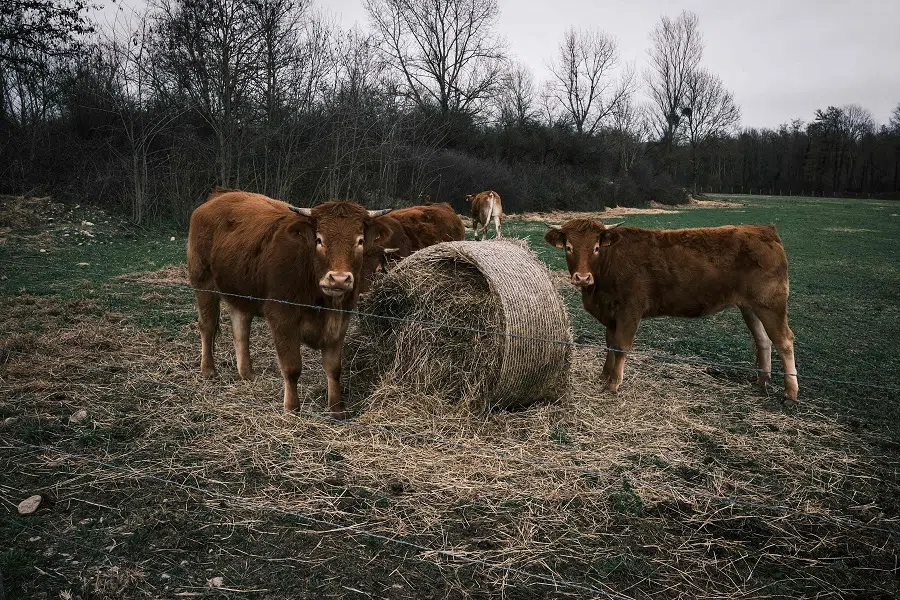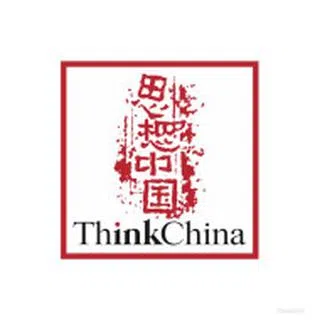Tackling food fraud upstream and downstream
Journalist Chieh-Yi Cheng notes that the traditional ways of food preparation have given way to high-tech production, leading to the improvement of food quality, as well as counterfeiting methods. It now becomes a cat-and-mouse game, with the need to boost efforts in surveillance, tracing funding sources, and tracking the quantity and movement of raw materials and ingredients, in order to nip the problem in the bud.

A desire to know what is on your plate may spoil your appetite. Advances in science and technology are challenging the very definition of food: a genetically modified apple may contain genetic material from bacteria; chicken breast, commonly considered a low-calorie staple, may have also become fatty due to intensive rearing; what appears to be a scrumptious steak may have in fact been cultivated in a petri dish in a laboratory.
Not to mention trans fats, sweeteners, food colouring, emulsifiers and other hard-to-pronounce chemical additives in processed food; pesticide residues in fruit and vegetables; and substances such as plasticisers, copper chlorophyllin and even rancid oil that unscrupulous and greedy manufacturers may use.
... the food production chain has become increasingly complex, but between the massive consumer base and numerous producers is a narrow gateway - like an hourglass - where trade access is in the hands of just a few middlemen.
Business as usual for crooks
Traditional ways of food preparation have given way to high-tech production, and while quality has improved, so has counterfeiting methods. Food fraud is nothing new.
During the Roman empire, people added lead into wine for a sweeter taste. London was a hotbed of food fraud during the industrial revolution - workers ingested bread containing chalk lime, pickles marinated in copper and cinnabar-dyed candies. In the 19th century, American farms were known to feed wine dregs to milk cows and dilute milk that had gone bad with water - this led to malnourished infants and young children, even causing some of them to die from diarrhoea.
With the current model of mass production and sales in the food industry, food safety crises have a wider and deeper impact, and harm more victims. Large-scale farms and feedlots trying to cut costs mixed parts of slaughtered cattle into cattle feed, violating the ground rule on cannibalism - this was the cause of mad cow disease in the UK in 1996. Tens of thousands of cows had to be culled; and continental Europe, the US, Japan and other countries were also affected. As the disease could also be spread to humans in the form of variant Creutzfeldt-Jakob disease, the incident caused widespread panic.

Against the backdrop of industrialisation and globalisation, the food production chain has become increasingly complex, but between the massive consumer base and numerous producers is a narrow gateway - like an hourglass - where trade access is in the hands of just a few middlemen.
It is not just consumers who are confounded by what is really on their plates; downstream operators often have no idea about the quality of ingredients too. Information asymmetry is rife, and unscrupulous businesses are quick to shirk responsibility. The lack of a comprehensive tracking system makes it difficult to identify culprits. And under the free market system, consumers are the ones bearing the cost of the dishonesty while deceitful operators rake it in.
Scruples seem to mean little in the face of fat profits - but food fraud harms not only the health of consumers and public health, it also scuppers fair competition. Letting unscrupulous operators go scot-free hurts the honest ones.
Food is crucial to people, and repeated food safety crises will also shake the confidence people have in their governments. Yet there is no magic bullet, the fight for food safety is a long game of police and thief - for the law to stay one step ahead of criminals, legislation and enforcement will also need to be supported by evolving scientific methods and technology.
To catch the thief, efforts in surveillance, tracing funding sources, and tracking the quantity and movement of raw materials and ingredients also need to be stepped up.
Government's role
Anglo-Saxon countries believe laissez-faire competition to be the best economic model, so although food fraud was rampant during the industrial revolution, the authorities were unwilling to intervene.
In comparison, countries in continental Europe - with France as a prime example - chose to impose stringent regulation as they believed that safeguarding food safety would boost national productivity and enhance the reputation of local produce at the same time. France already had regulations banning the use of mineral dyes in candies, fruit preserves, snacks and alcohol in the 19th century, as well as a dedicated food police.
In Italy, a country that takes food just as seriously as France, a system for managing the entire food supply cycle from production domain to the table was set up after the Second World War. In addition to the local health inspection teams in charge of performing routine checks, border control, customs, the coast guard, the National Forest Protection authorities that conduct field checks, and quality assurance inspection centres, there is also a national public health agency with policing powers, as well as an anti-fraud task force responsible for carrying out spot checks and investigations.

They target not just food on store shelves but also factories and farms, covering not just food for humans, but also farm feed and animal health. With a tracking and rapid reporting system in place, any problem food and their sources can be identified to stop food fraud in its tracks before the problem reaches the meal table.
Food safety crises are not always the fault of unscrupulous businesses. With the advancement of science, experts came to learn of the dangers of lead and mercury to humans. Recent discoveries such as super-resolution microscopy, gas chromatography, DNA analysis and other scientific tests coupled with existing databases can uncover more wrongdoers.
But it is a cat-and-mouse game, with the technological advancements in food fraud making them harder to detect. To catch the thief, efforts in surveillance, tracing funding sources, and tracking the quantity and movement of raw materials and ingredients also need to be stepped up.
Having a sharp eye for irregularities can be helpful in nipping problems in the bud. For example, when climate change caused a decline in grape harvest, the authorities should be on the watch for a corresponding decrease in wine production. When organic produce are in hot demand, greedy producers trying to cash in on the trend might be more tempted to pass off other produce, so testing for pesticide residue should be stepped up.
... food safety scandals [in China] such as contaminated preserved cabbage, diseased pork being sold for consumption and other scares continued to make consumers fearful, just as they had in Europe decades before.

China's State Food and Drug Administration (CFDA, now named National Medical Products Administration) was set up in 2003. The following year, the nation was rocked by the melamine milk scandal - babies who had been given milk powder tainted with melamine developed swollen heads, some even died. After merging with the Food Safety Office, CFDA was back on track in 2013, and China's agricultural production technology very quickly followed the same path as the US's. But food safety scandals such as contaminated preserved cabbage, diseased pork being sold for consumption and other scares continued to make consumers fearful, just as they had in Europe decades before.
Turning towards organic
While Europe no longer faces acute, immediate food safety issues today, milder but longer-lasting ones persist. And as it becomes harder to pin down the manufacturers responsible, consumers are turning increasingly to organic food to protect themselves.
Agricultural consultant Ettore Drenaggi pointed out that the cost of producing organic fruit and vegetables is 30% higher than that of conventional produce. Costs run 50% higher or double if biodynamic standards are to be met.
In a bid to move organic food from niche to mainstream, and to make it more accessible, big enterprises are investing in large-scale production overseas for export to Europe. However, these cheaper imports are not subjected to the same stringent requirements in pesticide management nor strict labour regulations, giving them an unfair advantage over local European farmers, who have recently taken to the streets in protest.

Some producers are capitalising on consumer imagination about "clean" eating to seek profits. A blind belief in the idyllic bucolic scenes advertised, and product label claims about being natural, organic and handmade entice consumers to spend more - and fall into another food trap.
Organic fruit and vegetables may in fact have been grown in greenhouses located on deforested land, while organic eggs can also come from hens that have never been outside of the chicken coop because young hens may be too timid to get close to grass due to a lack of experience.
Learning about what's on your plate
Laboratory testing and regulator-endorsed labelling help to ensure food safety, but food is not just a matter of chemical analyses conducted with advanced devices - it is also a sensory experience that involves all of our five senses, cultural heritage and a shared experience of humanity.
Food knowledge among consumers is the best weapon for fighting food fraud. As an Italian health officer once said, "Many discoveries of food fraud came from consumer complaints. Italians seem to be born with the DNA for determining food quality."
... the best way to fight food fraud is to know what is on your plate.

Having weathered food safety storms, increasingly more Chinese citizens are looking into healthy ways of producing food. Dr Shi Yan, who has a PhD in agricultural policy, has brought her experience with the Community Supported Agriculture programme in the US back to China.
Recounting her experience at the United Nations Food and Agriculture Organization, she said the "Shared Harvest" model she established was not just an organic production base, it also serves as a rural-urban bridge, allowing consumers to see and experience the production of the food they eat, and even to get involved.
As the European officials battling low-quality wine once said, the best way of distinguishing good wine from bad is to understand what makes good wine. Likewise, the best way to fight food fraud is to know what is on your plate.
Anyone who has tried growing herbs on their balcony would appreciate the professional knowledge involved in crop cultivation; if you have ever tried harvesting eggplant from the solid ground where they have grown with your own hands, felt the springiness of the flesh of fresh fish, tasted cheese made from the milk of grass-fed cows, you would know the taste of "real food".
Seize the opportunities to get to know the farmer, butchers and fishermen who supply your food. Procuring food face-to-face makes for the shortest possible supply chain, which leaves nowhere for unscrupulous operators to hide.




![[Big read] China’s 10 trillion RMB debt clean-up falls short](https://cassette.sphdigital.com.sg/image/thinkchina/d08cfc72b13782693c25f2fcbf886fa7673723efca260881e7086211b082e66c)
![[Big read] Love is hard to find for millions of rural Chinese men](https://cassette.sphdigital.com.sg/image/thinkchina/16fb62fbcf055b710e38d7679f82264ad682ce8b45542008afeb14d369a94399)